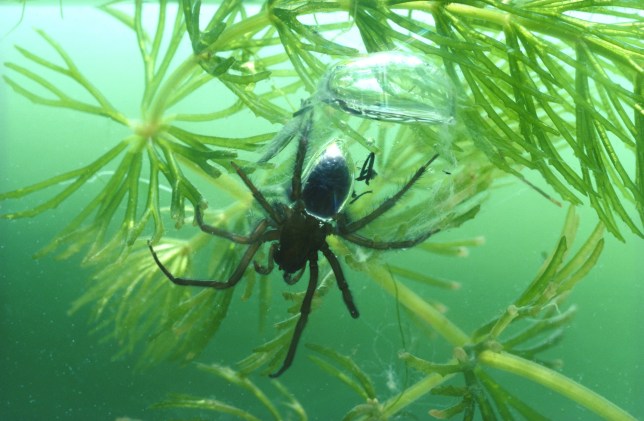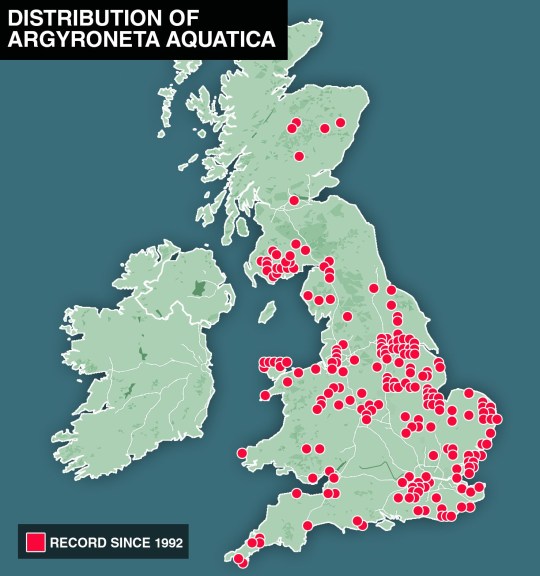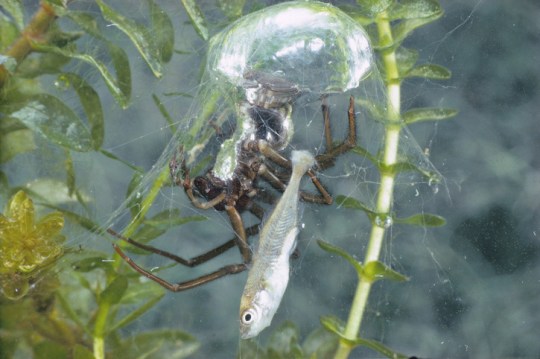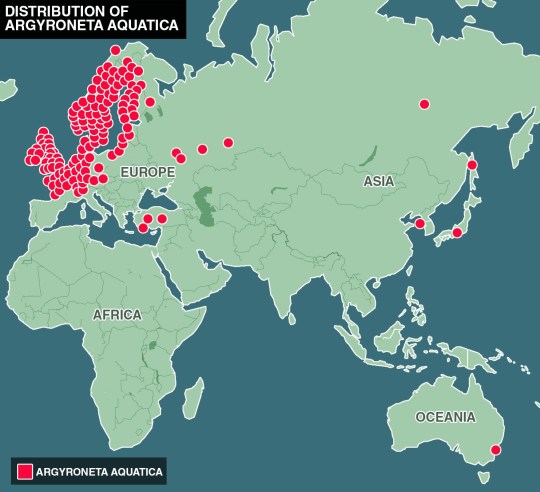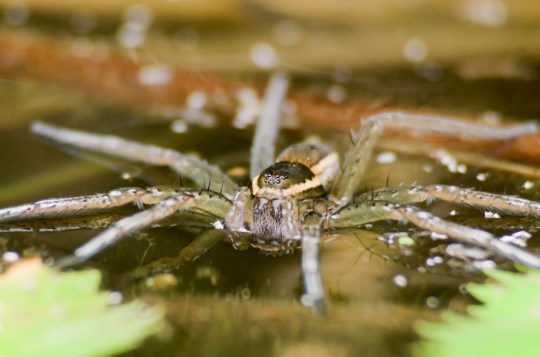Spiders are everywhere – even underwater.
The diving bell spider, or water spider (Argyroneta aquatica), is known to live entirely underwater, from resting, catching and eating prey, as well as mating and wintering.
But this particular type of spider is also a cannibal and can be found right here in the UK in some favourite holiday hotspots along the south coast of England, as well as in Wales and in the Lake District.
It can also be spotted across Scandinavia as well as Europe’s top holiday destinations including as France, Germany and Switzerland.
However, as it needs oxygen to breathe, the spider surfaces very briefly to replenish its oxygen supply inside its underwater web – which it creates by trapping air in a layer of dense waterproof hairs on its abdomen and legs to add to its bubble of oxygen under water.
Where are diving bell spiders found?
The aquatic spiders are found in freshwater locations, such as lakes, ponds, and canals and slow-moving streams through mainland Europe and northern Asia.
The spider can be spotted throughout the UK, and prefers to live in wetlands, edges of lakes, ponds and rivers, where there is a ground layer.
However, although it has been seen across Europe, it has not been spotted in Portugal, Greece and Albania.
In the UK, the spider is found in Cornwall, the Lake District, Anglesey, and Bournemouth.
Across Europe, the spider has been spotted in cities like Munich and across Germany.
The diving bell spider has also been spotted in Asia, as Japan has their own species, which is known as A. a. japonica, and is identical to its European cousin, but has larger genitals.
This species can be found in ponds across Kyoto.
In South Korea, the species is protected and lives in the Yeoncheon Eundaeri water spider habitat, which is a dedicated place for water spiders.
Is the diving bell spider a cannibal?
In the first account of reversed sexual cannibalism, researchers have discovered that male diving bell spiders will sometimes eat their female partners.
The researchers found that the likelihood of the females being cannibalised was their avoidance behaviour towards the preferred larger mating partners.
The researchers also found that large males and females would also kill small males.
How does the diving bell spider survive?
The spider creates a web.
But not any type of web, a silk-based structure that can retain an oxygen supply, named after the diving bell structure it looks like.
The spider spins a web between underwater plants and then carries air from the surface down to its web. Although the spider needs oxygen to breathe, it’s web acts like a gill, and extracts oxygen from the water so it only needs to surface once a day to replenish its supply.
It scrapes off the air into the bubble and as the bubble expands to an average size of 20mm, the spider can fit inside and the air in the diving bell is regularly refreshed.
The oxygen levels in the bell remain stable as oxygen produced by green plants diffuses into it from the surrounding water.
It even carries a bubble of air trapped between its hydrophobic hairs to add to its main bubble, giving it a silvery, velvety colouration despite it being mid to dark brown.
However, female and male diving bell spiders have some stark differences.
The male diving bell spiders are larger and heavier than females, with longer front legs that help them move more efficiently underwater.
As females need to build bigger webs for their potential young, their size is smaller as they spend more energy frequently transferring fresh air from the water surface to the bell.
The water spider dives deep in late autumn to avoid being trapped in ice and builds a stronger retreat that it fills with air and then keeps itself inside until the weather warms in early spring.
Are diving bell spiders dangerous to humans?
Diving bell spiders are small but prey on small fish, so they have a powerful bite. However, while not lethal to humans, its bite has been reported as painful.
A different type of spider – the false widow – is known as the most venomous in the UK.
MORE : Mum glassed in face by complete stranger as she was putting on make-up
MORE : Woman’s cheek ‘ripped off and eaten by friend’s sausage dog’
MORE : B&B in UK’s ‘retirement capital’ crowned one of world’s best
Get your need-to-know
latest news, feel-good stories, analysis and more
This site is protected by reCAPTCHA and the Google Privacy Policy and Terms of Service apply.

